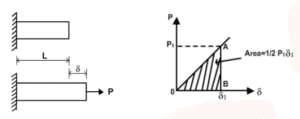Dynamic Loading
3 min read
The study of time-dependent forces and motions is the focus of dynamics. Time-varying is the simplest definition of dynamic loading. Any load that varies over time in terms of size, direction, and position is considered dynamic loading. As a result, there is a time variation in the structural response to dynamic stress. Structure displacements are used to express the structural response to a dynamic loading.
A structure begins to vibrate when it experiences dynamic load. The structure creates a large number of inertia forces and stores a large amount of mechanical energy as kinetic energy during vibration. There are two distinct methods for analyzing the structural reaction to a dynamic leading:
(1) Deterministic Analysis
(2) Non Determitostic Analysis
(1) Deterministic Analysis:
In this method, the structural response is displacement, acceleration, velocity, stress, etc., which are completely known precisely as a function of time. Hence, this method requires perfect control over all the variables that influence the properties and loadings. This method is also called prescribed dynamic loading.
The systematic process of deterministic analysis aims to accurately comprehend and forecast the structural response to dynamic loading. This approach focuses on variables that are extremely precisely known as functions of time, such as displacement, acceleration, velocity, stress, and other pertinent aspects.
Deterministic analysis’s fundamental tenet is its insistence on absolute control over every variable affecting a structure’s loadings and attributes. Accurate and trustworthy forecasts of the structural response under dynamic loading circumstances depend on this fine control. Deterministic analysis, also known as prescribed dynamic loading, is used in situations when a thorough comprehension of the dynamic behavior of structures is crucial.
Engineers and academics use sophisticated mathematical models and simulations in deterministic analysis to compute exact values of stress, acceleration, displacement, and velocity at any particular moment. This makes it possible to fully comprehend how a structure will respond to particular dynamic loads, offering insightful information for engineering and design needs.
Deterministic analysis has drawbacks even if it provides a high degree of accuracy. In real applications, achieving full control over all variables impacting structure behavior can be challenging. Deterministic approaches may not fully represent the intricacies present in real-world contexts, which might make it difficult to predict structural responses in some situations.
(2) Non-Deterministic Analysis:
In this method, the time variation of vibration is not completely known. It provides only statistical information about the response from the statistically defined leading. This method is also known as random dynamic loading
When uncertainties are introduced by real-world settings or when the time variation of vibration is not fully known, non-deterministic analysis finds practical uses. This method offers a more accurate picture of how structures will respond to various, erratic dynamic pressures.
Non-deterministic analysis provides statistical data to support risk assessment. By calculating the likelihood of certain structural reactions, engineers can design structures that are more resistant to a variety of dynamic difficulties.
Non-deterministic analysis has useful applications when the vibration’s time variation is not fully understood. Engineers can create structures that are more resilient to uncertainties and provide a safer and more dependable performance in real-world scenarios by accepting the statistical nature of dynamic loads.
Types of Prescribed or Deterministic Loading
The two categories of specified or predictable loadings are “Periodic” and “Periodic or Non-Periodic.”
Periodic leading.

Periodic loading This is the situation where loads show the same time variation consistently across a significant number of cycles. Simple harmonic loading is a sinusoidal variation that is the most basic type of periodic loading. Any periodic loading can be represented as the sum of several simple harmonic components using the Fourier series. Thus, the general process for analyzing the response to any periodic loading is the same. The periodic loading examples Figure 1.1.

Non-periodic loading, also known as aperiodic loading, is any loading that exhibits an impulsive long- or short-duration loading that does not show the same time variation repeatedly. An explosion or a host is a common source of impulsive load; in the case of such a short duration, particular simplified types of analysis, such as Duhamel’s integral, may be applied. Conversely, a broad, extended leading may be caused by a seismic event and requires comprehensive general dynamic-analysis techniques to address. Examples of Non-Periodic Loading Figure 1.1
Dynamic Loading
Also Read:- Types Of Loads In Beam







